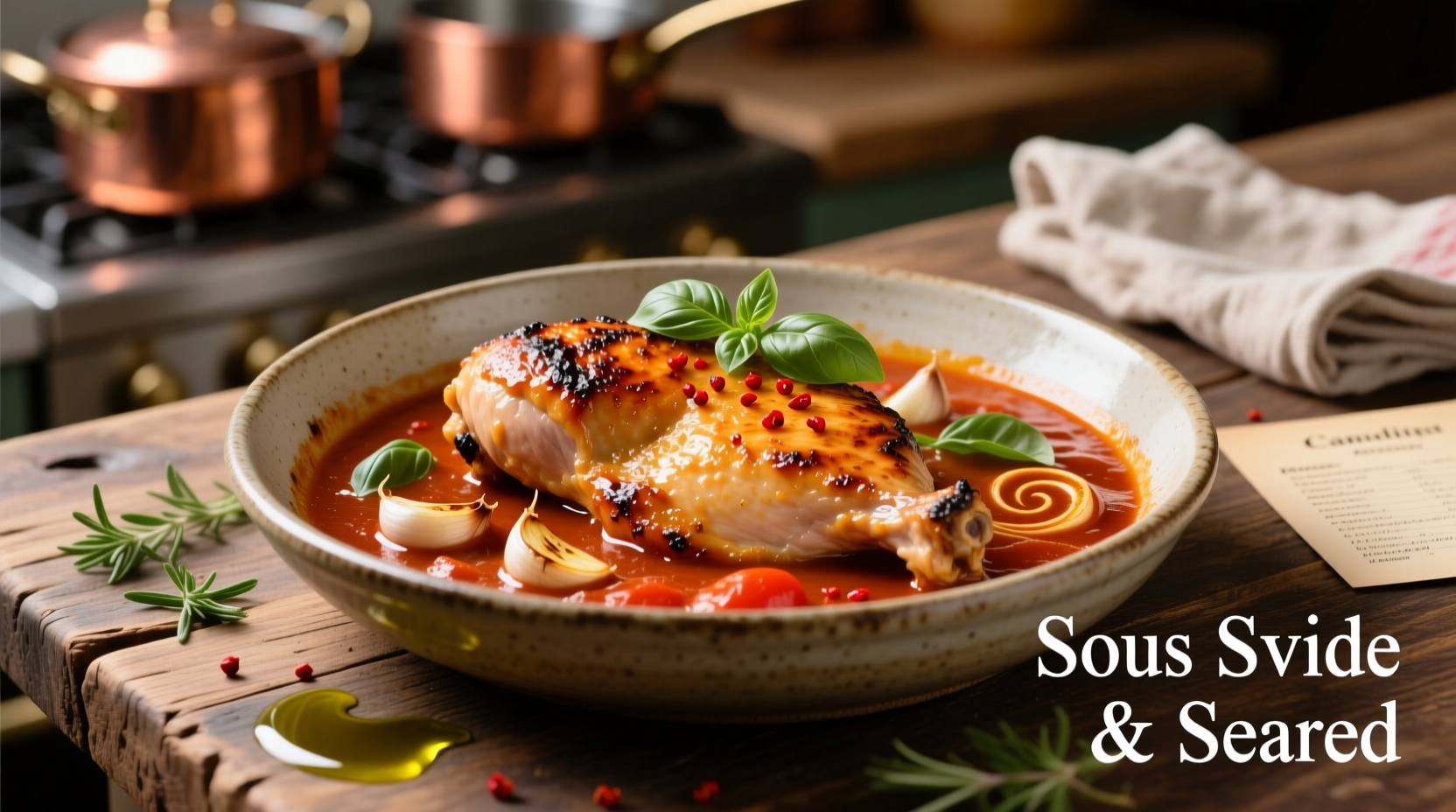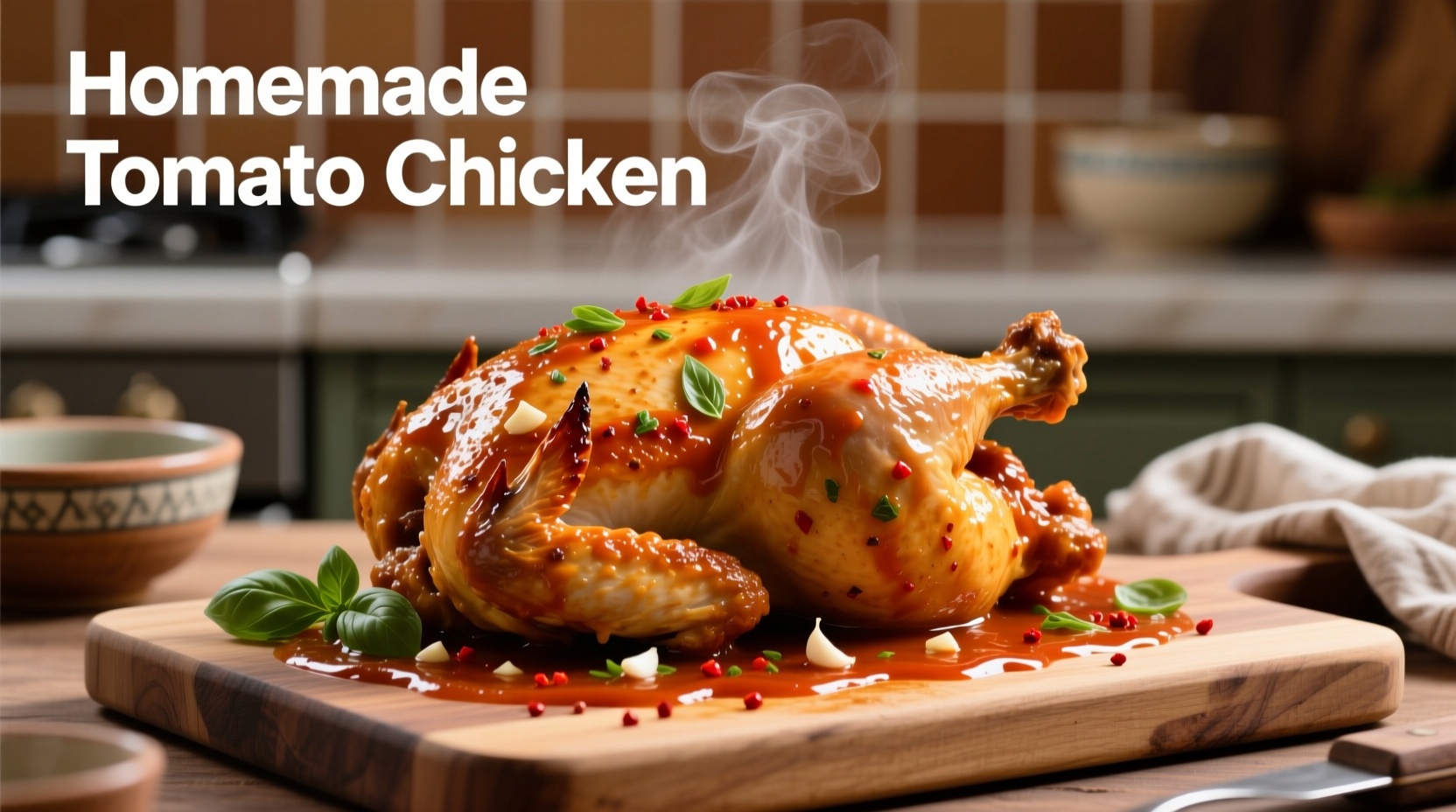Why This Classic Dish Deserves a Spot in Your Recipe Rotation
Chicken with tomato sauce isn't just convenient—it's a culinary masterpiece when executed properly. The magic happens when the natural sweetness of ripe tomatoes complements the savory depth of properly seared chicken, creating a harmonious flavor profile that satisfies without overwhelming. Unlike many weeknight meals, this dish actually improves when made ahead, as the flavors continue to meld during storage.

Your Step-by-Step Path to Perfect Chicken with Tomato Sauce
Preparation Phase: Setting Yourself Up for Success
Before you begin cooking, gather these essential components:
- Chicken selection: Boneless, skinless thighs provide more flavor and stay juicier than breasts during simmering
- Tomato foundation: High-quality canned San Marzano tomatoes (DOP certified when possible) deliver consistent sweetness
- Aromatics trio: Fresh garlic, onion, and carrot form the flavor base that transforms simple ingredients into something extraordinary
| Ingredient | Quality Indicator | Substitution Option |
|---|---|---|
| Chicken thighs | Deep pink color, no gray spots | Bone-in thighs (add 10-15 minutes cooking time) |
| Tomatoes | DOP certification, whole canned | Fire-roasted tomatoes (adds smoky dimension) |
| Extra virgin olive oil | Green-gold color, peppery finish | Avocado oil (higher smoke point) |
Cooking Sequence: Timing Matters More Than You Think
The critical mistake most home cooks make? Adding everything to the pot at once. Follow this professional kitchen-tested sequence:
- Season and sear: Pat chicken dry, season generously with salt, then sear in hot oil until golden (about 3 minutes per side). Remove and set aside.
- Build flavor foundation: In same pan, cook onions until translucent (5 minutes), add garlic and dried herbs, cook 1 minute until fragrant.
- Tomato transformation: Crush tomatoes by hand into the pan, scraping up browned bits. Simmer 10 minutes to develop depth.
- Finish cooking: Return chicken to sauce, cover, and simmer on low heat for 20-25 minutes until chicken reaches 165°F internally.
Avoid These Common Pitfalls
Even experienced cooks stumble with these three issues:
- Sauce separation: Caused by adding cold ingredients to hot pan. Always bring tomatoes to room temperature first.
- Dry chicken: Overcooking is the enemy. Use a thermometer and remove at 160°F (it will carry over to 165°F).
- Bland flavor: Tomatoes need acid balance. Add a pinch of sugar only if tomatoes taste too acidic, not as routine.
Understanding the Evolution of Chicken with Tomato Sauce
This dish didn't originate as we know it today. The marriage of chicken and tomatoes is actually a relatively modern culinary development:
- Pre-18th century: Tomatoes were considered poisonous in Europe and grown only as ornamental plants
- Late 1700s: Italian peasants began using tomatoes in cooking after realizing their safety
- Early 1900s: Italian immigrants brought tomato-based chicken dishes to America
- Post-WWII: Canned tomato technology made the dish accessible worldwide
According to food historians at the Italian Food Heritage Foundation, the first documented recipe for "pollo al pomodoro" appeared in Pellegrino Artusi's 1891 cookbook "Science in the Kitchen and the Art of Eating Well," though it differed significantly from today's versions.
Regional Variations Worth Exploring
While the basic concept remains consistent, cultural adaptations create distinct experiences:
- Italian classic: Simple preparation with fresh basil, minimal garlic, and high-quality olive oil
- Spanish pollo al ajillo: Features generous garlic and paprika, often finished with sherry vinegar
- American-Italian: Typically includes bell peppers and mushrooms, served over pasta
- Mediterranean twist: Adds olives and capers for briny complexity
Serving Strategies for Maximum Enjoyment
How you present this dish dramatically impacts the experience:
- For weeknight efficiency: Serve over quick-cooking polenta or couscous (ready in 5 minutes)
- For special occasions: Garnish with fresh basil ribbons and high-quality olive oil drizzle
- Dietary adaptation: For low-carb versions, pair with roasted vegetables instead of starches
- Leftover magic: Shred remaining chicken and sauce for phenomenal chicken parmesan sandwiches
Food Safety Essentials for Poultry Preparation
The USDA Food Safety and Inspection Service emphasizes these critical guidelines when preparing chicken dishes:
- Always cook chicken to minimum internal temperature of 165°F (73.9°C)
- Never rinse raw chicken (spreads bacteria up to 3 feet)
- Use separate cutting boards for raw poultry and other ingredients
- Refrigerate leftovers within 2 hours (1 hour if room temperature exceeds 90°F)
According to the USDA FSIS guidelines, properly stored cooked chicken with tomato sauce remains safe for consumption for 3-4 days in the refrigerator or up to 4 months when frozen.











 浙公网安备
33010002000092号
浙公网安备
33010002000092号 浙B2-20120091-4
浙B2-20120091-4